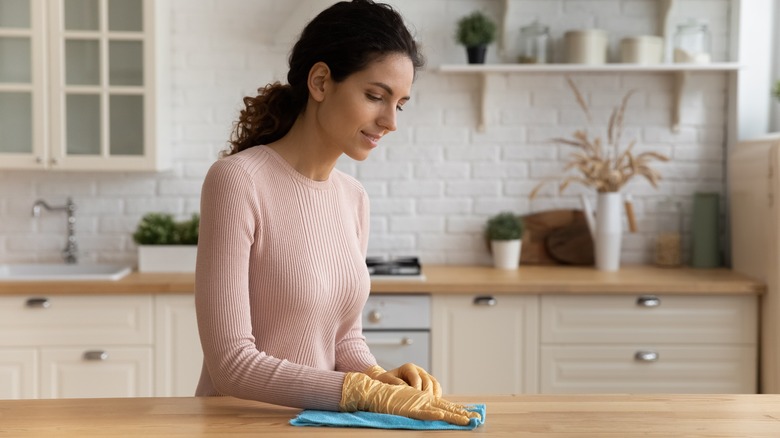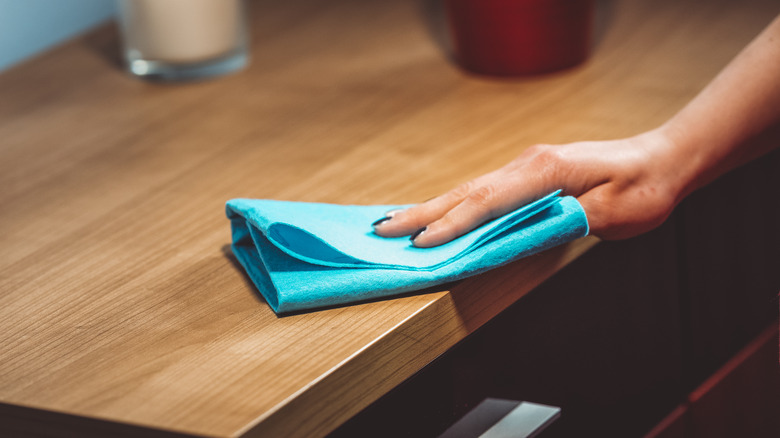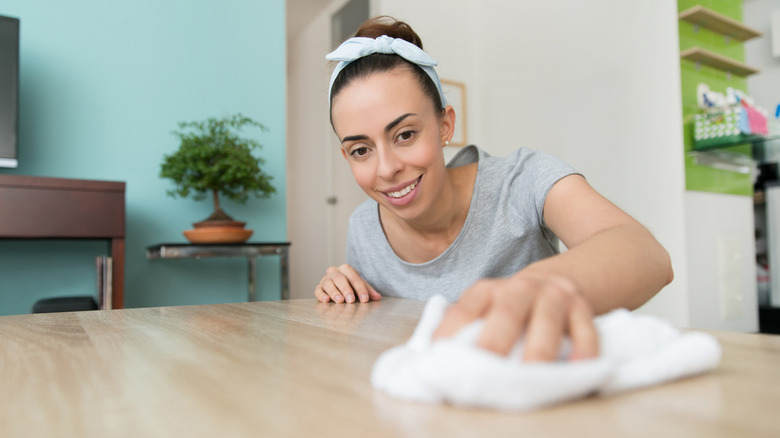Remove Heat Stains From Wood Furniture With Two Staple Ingredients
Leaving heat stains on your wood furniture is a common mishap. Whether it's a morning cup of coffee on the arm of a chair or a hot bowl of soup on an unsuspecting coffee table, it's easy to forget a coaster or trivet to protect the surface of your wood furniture. Since wood is porous, it can easily absorb liquids and moisture from the condensation or steam from hot objects. As a result, the wooden surface of your furniture can be damaged, stained, or even blistered in response to the heat. Should the furniture have a finish on top, hot objects may also cause discoloration in its appearance. Nevertheless, olive oil and vinegar can restore the surface of your wood furniture. Simply combine them to tackle these unsightly stains.
Oil and vinegar, a classic opposing duo, actually work well together to remove heat stains from wooden furniture. Since vinegar is an acid, it gently breaks down the residue left by the heat on the wood surface. Simultaneously, oil is a natural moisturizer that conditions the wood, restoring the luster and hydration from the imposed heat. Therefore, by combining these two staple ingredients, you can easily create a potent solution that will nourish and rejuvenate your wood furniture, reviving its natural beauty without resorting to harsh chemicals or expensive treatments.
Using vinegar and olive oil to restore wood furniture
The concoction is not all that different from making a simple vinaigrette, except that your wood furniture will bask in this sweet combination instead of your salad. To get started, mix equal parts of white vinegar and olive oil in a small bowl or container. A 1⁄4 cup of each liquid should be sufficient, but you can scale up if working with a larger stain or multiple ones.
Once you've mixed them, dip a clean cloth, sponge, or brush into the solution, wring it out, or tap off the excess to prevent over-saturating the surface. Use your choice tool to apply the vinegar and oil mixture directly to the heat stains on the furniture. Work the liquid into the stain with gentle, circular motions, ensuring the entire stain is covered. Allow the mixture to rest on the stain for about an hour. Then, use a clean, dry cloth to remove the liquid from the wood surface.
If the first application did not completely remove the stain, you can try again and let it sit longer the second time. You can also try lightly massaging the solution into the stain. Once satisfied, apply wood furniture polish to the entire surface for a glossy finish.
Cautions for this method
Though vinegar and olive oil can be a natural and affordable method to treat heat stains on your wood furniture, take precautions to avoid inadvertently damaging your furniture. Whenever cleaning or polishing product is applied to any of your furniture pieces, it's always a good idea to test it in an inconspicuous place before using it on the entire stain. Doing this first will help you avoid any adverse outcomes like discoloration or surface damage should your wood surface not react well.
Another thing to keep in mind is that vigorous scrubbing on the wood can damage or strip away the finish on the surface. Be sure to use a gentle touch. On this same note, leaving the vinegar and oil solution on the wood too long could also damage the wood, possibly leading to swelling or warping. Don't let it sit for more than an hour at a time, and allow the wood to rest in between applications to protect the integrity of the piece.
Finally, wipe away all residue from the surface when your applications are complete. Excessive moisture will likely damage your furniture, so buffing away any excess liquid is important to preserve its appearance and durability. Also, be sure the oil and vinegar are of high quality; otherwise, they may contain additives or impurities that can damage or strip away the surface.


